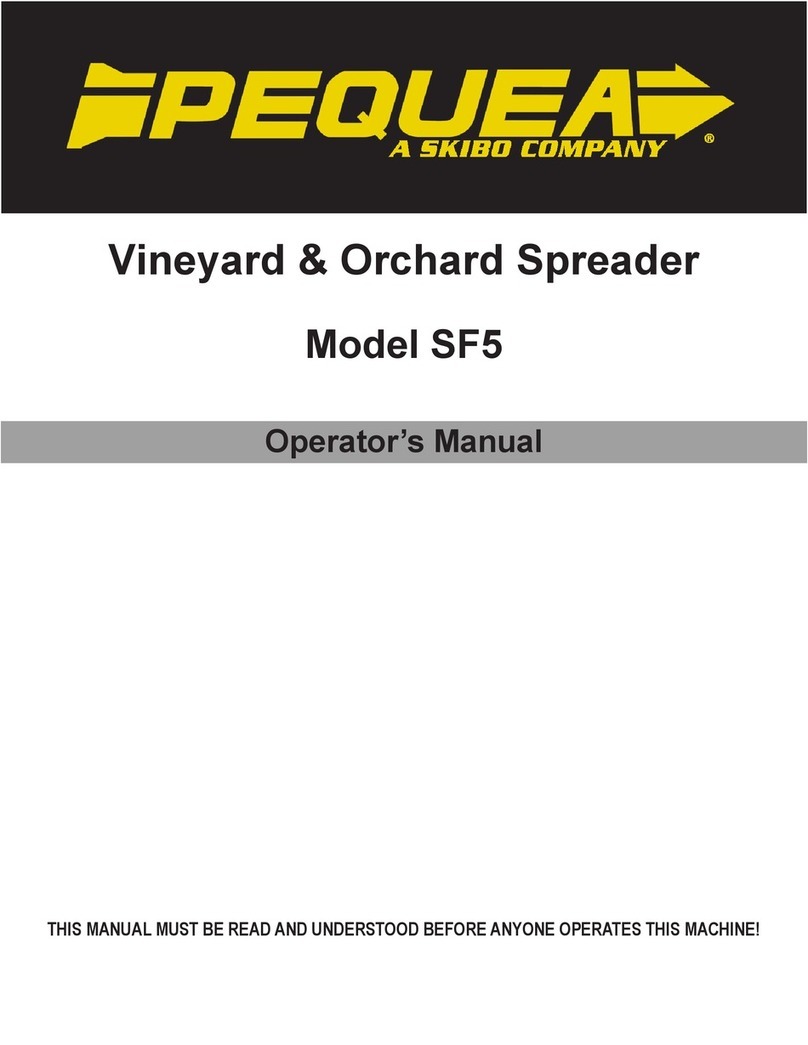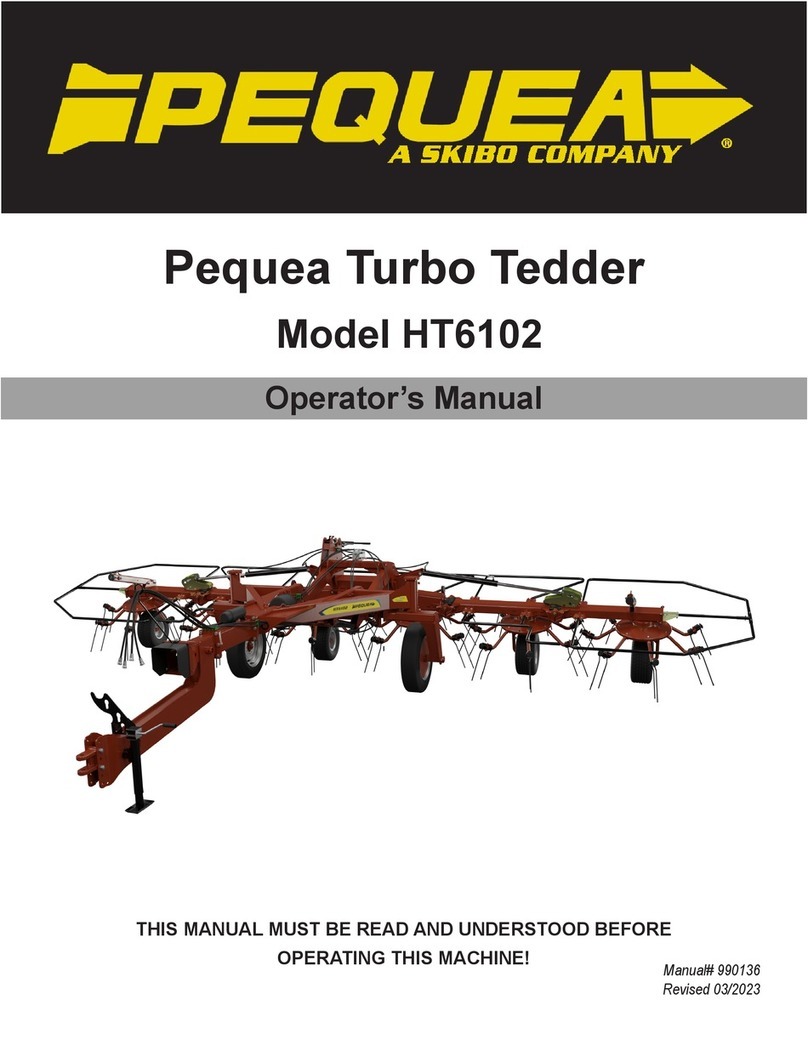
1
SPECIFICATIONS................................................................................ 1
DECALS......................................................................................... 2
SAFETY/ CAUTION .............................................................................. 3
BEFORE USE .................................................................................... 4
OPERATION ..................................................................................... 5
LOADING ....................................................................................... 7
BEFORE LOADING . . . . . . . . . . . . . . . . . . . . . . . . . . . . . . . . . . . . . . . . . . . . . . . . . . . . . . . . . . . . . . . . . . . . . . . . . . . 8
FEED CONTROL POSITIONS...................................................................... 9
LUBRICATION ..................................................................................12
MAINTENANCE. . . . . . . . . . . . . . . . . . . . . . . . . . . . . . . . . . . . . . . . . . . . . . . . . . . . . . . . . . . . . . . . . . . . . . . . . . . . . . . . . 16
TROUBLESHOOTING ...........................................................................21
INDEX .........................................................................................22
DELIVERY REPORT..............................................................................23
WARRANTY....................................................................................24
Contents
Pequea Machine, Inc. reserves the right to change specifications without notice.
Specifications
Models 125 PTO 175 PTO 250 PTO
Capacity 125 Bu. 90 Cu. Ft. 175 Bu. 108 Cu. Ft 250 Bu. 128 Cu. Ft.
Overall Length 16'6" 17'8" 20'5"
Overall Width 76" 86" 92"
Loading Height 45" 44" 44"
Flared Width 56" 66" 72"
Box Width 47" 54" 60"
Box Length 128" 140" 160"
Box Height 23" 24-1/2"
Box Construction 10 Gauge High Steel Strength
Floor Construction High Density Poly Vinyl 3/4" T & G
Beater Paddles 8 Replaceable 10 Replaceable
Beater Diameter 26"
Drive PTO w/ 2 speed gearbox
Apron Chain 7/16" T-Rod
Spindle 2-1/8" 2-1/2", Optional Tendem Axle
Wheels/Tires 16 x 8-8 Bolt
10 x 16 Imp.
20 x 7-8 Bolt
10 x 20 O-Road
Jack 2K Bulldog
Weight w/ Tires 1850 lbs. 2220 lbs. 2620 lbs.
Tongue Weight Empty 110 lbs. 180 lbs. 200 lbs.
Tongue Weight
(Loaded Estimated)
325 lbs. 400 lbs. 450 lbs.
Horsepower Required 35 HP @ PTO 45 HP @ PTO 55 HP @ PTO
OPTIONS
Fine Spread Pan YES
Top Beater YES
End Gate YES
























